Article's Content
On September 16, 2020, a blizzard raged on Wall Street thanks to Snowflake’s oversubscribed IPO day.
The initial public offering price of $120 per share announced the night before had doubled by the opening bell. Shares opened at $245 per share, rose quickly above $300, and closed with a whopping 112% gain.
By the end of the day, Snowflake had sold 28 million shares and raised nearly $3.4B. An astonishing debut! But that’s just the tip of the iceberg.
The data cloud software boasts an impressive $600M ARR and a massive valuation of $68.72B (more than 5X its valuation in February 2020). Despite its stock price falling by 45% in Q1 2021, Snowflake still stands strong with a revenue of $213.8M.
While it may seem like luck or good timing, like all overnight successes, Snowflake’s growth was a long time in the making. The team worked hard behind the scenes to create a dominant online presence in the data cloud niche.
The result?
- 1.4M annual organic visits;
- 177K monthly visitors;
- 140K live backlinks.
The secret?
Positioning.
Snowflake focused primarily on differentiating its offering in prospects’ minds. As a result, they’ve attracted, engaged, and landed 187 of the Fortune 500 companies as customers (so far).
Let’s take a deep dive into the marketing strategy that helped Snowflake deliver the largest software IPO in history, including:
- How to create content for user intent
- How to position your product in a noisy marketplace
- How to create personalized, high converting landing pages
- How to align marketing and sales to boost conversions
- The role of insightful webinars and conferences
Ready?
Let’s get started.
How Snowflake Dominates the SERPs
First, some backstory.
When we first started to look into Snowflake’s online presence, we thought, “Wow… Snowflake is doing so well. I bet PPC is the engine working hard to drive such massive growth.”
But the numbers suggested otherwise. Here’s what we found:
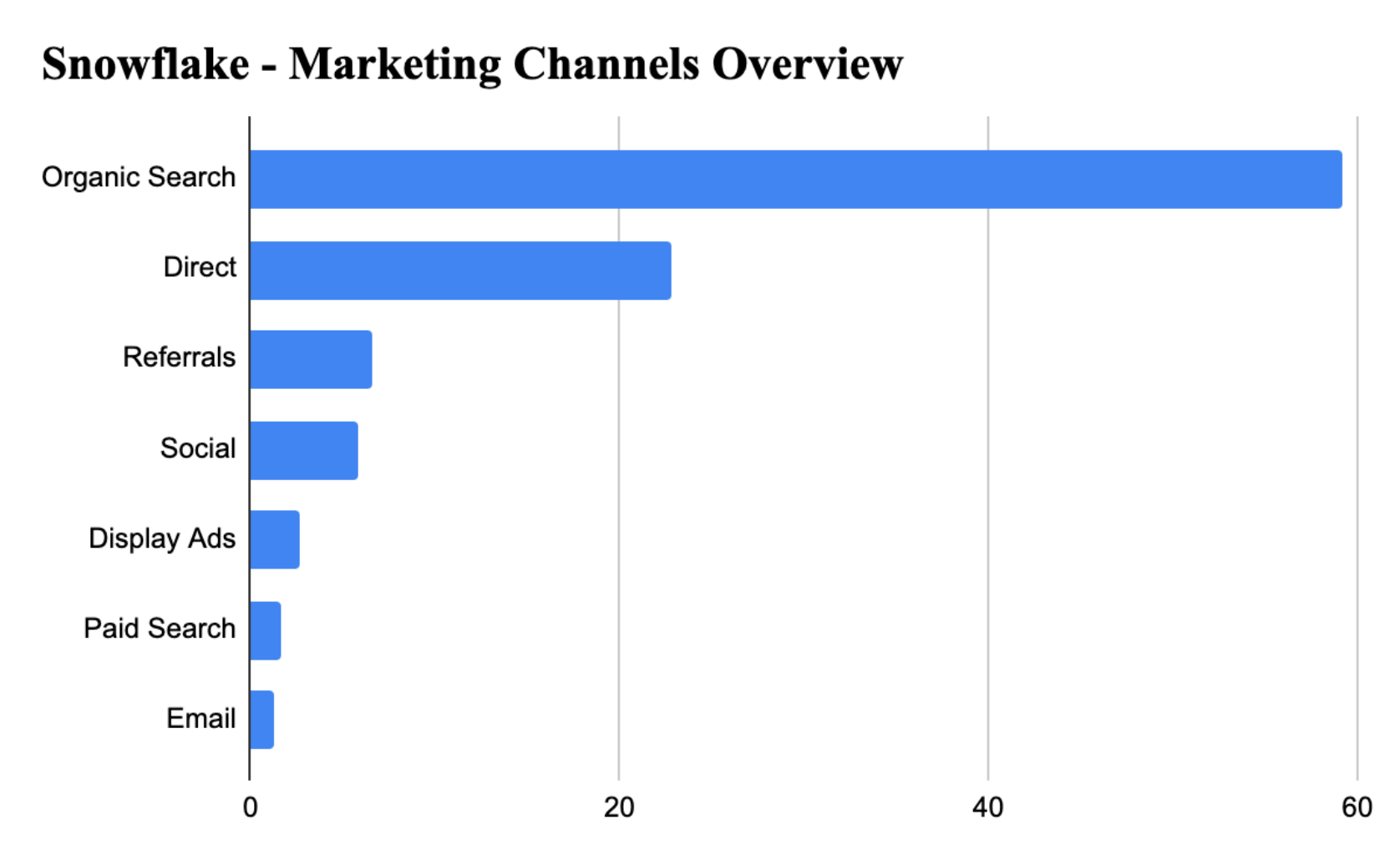
According to this data from SimilarWeb, Snowflake’s primary source of traffic is “organic search.”
Yes, you heard right: Organic!
Sure, good old-fashioned ads contributed to the overall traffic. But that 2% is nothing compared to the 59% of traffic generated via organic search.
Snowflake focused on organic search – the channel where their audience spent the most time researching their problems. They prioritized creating and distributing content that offered real, actionable solutions.
It’s no wonder Snowflake ranks for an impressive 39K organic keywords. These keywords are a mix of branded and non-branded search terms.
Here are a few of the top-ranking keywords:
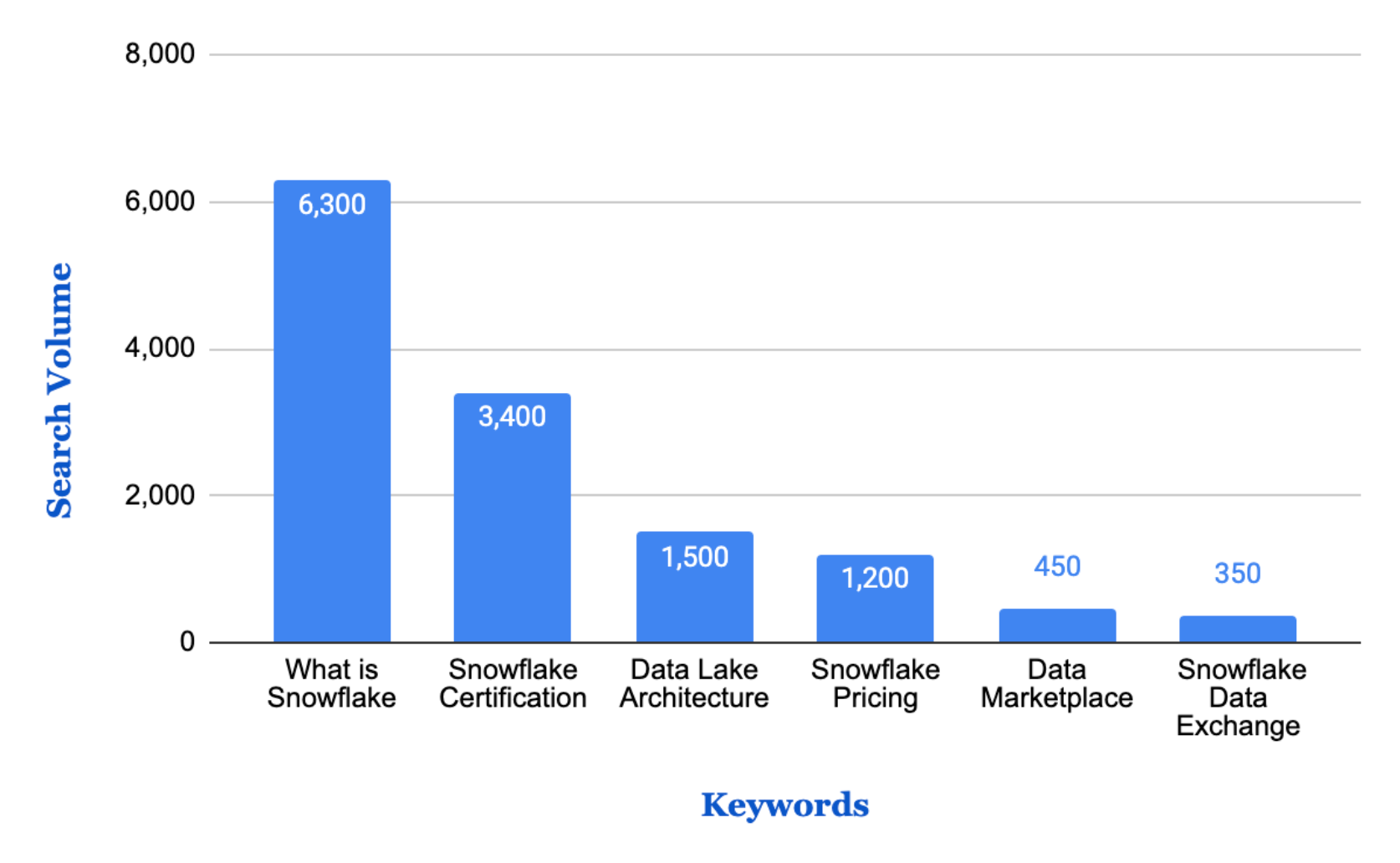
These terms reveal the searchers’ intent. The searchers for these terms weren’t just surfing the internet because they were bored. They wanted real solutions to real data cloud issues.
Snowflake understood their intent and leveraged it. Here’s how they did so:
How to Use Search Intent to Establish Authority and Boost Conversions
Search intent is a user’s why.
It is the reason why they pick up their device, make their way to Google, and type their latest problem or inquiry. They want to discover something new, learn more about a subject, or compare options before deciding on the next step.
Now, here’s the problem:
Many content creators and marketers spend more time focused on keyword search volume than the intent behind the search. But, when they do that, they create content that doesn’t address the prospect’s real pain points, losing their chance to reach them.
Snowflake leaves no openings to its competitors, capitalizing on each one of the four search intent categories:
- Informational: Looking to learn more information
- E.g., “What is Data Marketplace?”
- Navigational: Looking to get somewhere specific
- E.g., “Snowflake Data Lake for Dummies”
- Transactional: Looking for an asset to buy, use, or download
- E.g., “Snowflake Pricing” or “Snowflake Certification”
- Investigational: Trying to compare assets
- E.g., “Snowflake vs. BigQuery” or “Data Scientist vs. Machine Learning Engineer”
For instance, Masterclass uses actionable blog posts to respond to different search intents for similar queries. Now, it’s pretty easy to understand search intent when you have modifiers like these to help:

Each of these search types tells a different part of the buyer’s story.
Take an informational search query like “what is Data Marketplace?” for instance. When you type in this query into the search box, you will get this:
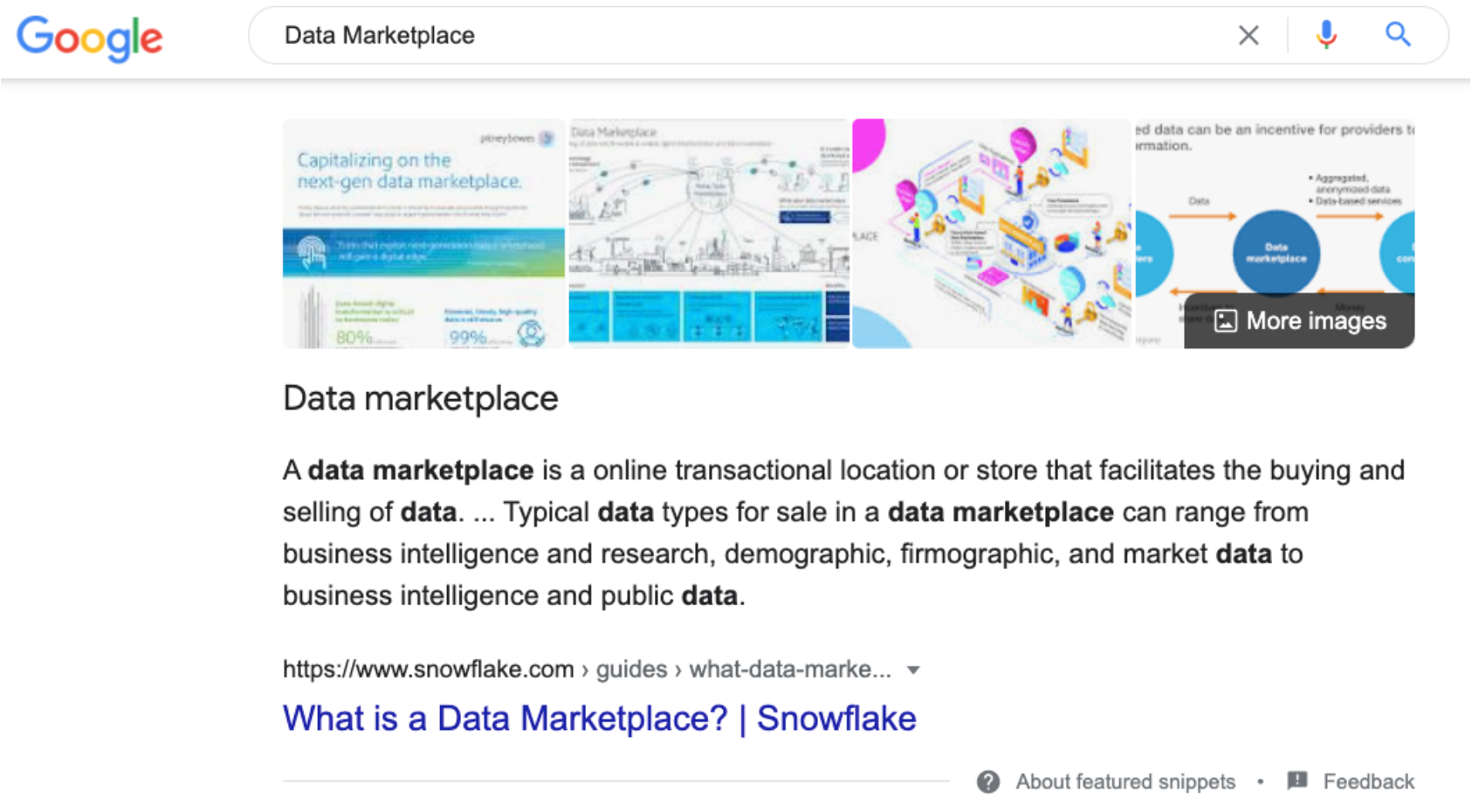
The searcher is trying to learn the basics about their problem (and the solution)—just enough to make better-informed decisions and perhaps evoke curiosity to learn more about it.
What they need at this point isn’t a sales pitch but actionable content.
Snowflake provides that to prospects right away with a short blog post, a downloadable masterclass guide, and a complimentary ebook.
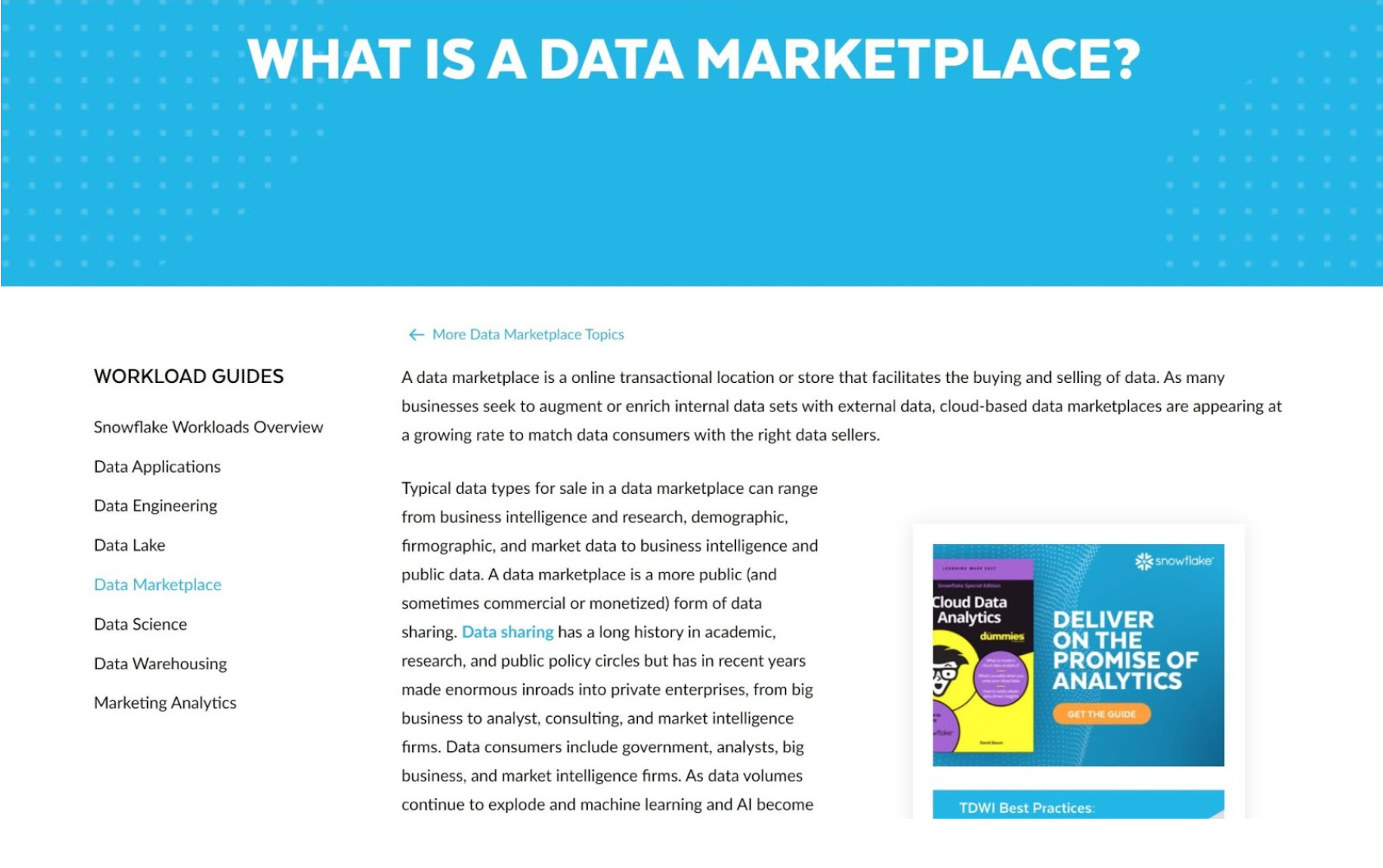
These lead magnets position Snowflake as an expert guide and reliable solution for prospects. It’s a win-win for both parties. The prospect gets detailed answers to their questions while Snowflake earns some more qualified leads and paying customers.
Like Snowflake, you can position yourself as the go-to expert, leveraging search intent to craft custom content in response to customer pain points. So don’t neglect search intent while creating your content strategy. It will amplify your marketing efforts and overall positioning as well.
Identifying the right search intent starts with defining the niche you want to own within your industry. From the get-go, Snowflake got this spot-on.
Let’s see how they did it.
How To Position Your Product in a Noisy Marketplace
Positioning is how you break through the noise online and reach your customers. It is about choosing a niche and owning it. That’s how you make the most out of your marketing efforts and budget.
For Snowflake, positioning is a lot more than another marketing pillar. It’s the foundation of effective marketing.
Denise Persson, Snowflake’s CMO, describes positioning as “winning the battle for your prospects’ minds through differentiation.” She said,
“With strong positioning, you can avoid cracks in your marketing, and your program investments will be more effective.”
In 2016, Snowflake positioned itself as “The Data Warehouse Built for the Cloud,” defining the category it wanted to own. This approach took the company from 0-$100 million in revenue in 2017.
Despite their success, Snowflake redefined its positioning to reflect its unique value proposition. But the company didn’t do this without some testing.
Snowflake ran extensive focus groups with real prospects. But instead of focusing on existing customers or qualified leads, as most companies do, they reached out to prospects who had never interacted with the brand.
The result?
They got loads of actionable insights and data for their next growth stage. The data-driven process made it easy for marketing, sales, and other departments to align.
Your employees, partners, and customers all need to describe you the same way. That way, your positioning stays consistent across all marketing channels, including word-of-mouth or referral marketing.
It’s like Denise Persson said:
“You can’t win the battle for your prospects’ minds if you are changing who you are every six months. The more consistent you are, the more impactful your marketing will be.”
Put the horse before the cart.
Define the position you want to own—your unique value proposition—before you invest in marketing. Test your market position. Engage real prospects, including those who know nothing about your brand. This data-driven approach will make your marketing efforts worthwhile.
As a B2B brand, great positioning also depends on identifying and understanding your target audience so you can target them better.
If you haven’t already defined your audience (or you aren’t sure), here’s a comprehensive guide to help you get started.
But that’s not all that went into Snowflake’s stunning debut.
Let’s see what else they did right.
Using the ABM Approach to Drive Growth
The crux of ABM is captured in two words: alignment and personalization.
Snowflake’s mind-blowing success comes from aligning marketing and sales to build better relationships with prospects and customers. As Denise Persson said:
“While there are certainly some operational distinctions between the sales and marketing, they share what ultimately matters most: the goal of winning the hearts and minds of customers. What’s more, they need each other to succeed, and that makes them natural partners.”
In 2019, they had just 30 sales reps, who were each assigned 100 accounts. Rather than adopt a one-to-many approach, Snowflake’s marketing team works closely with the sales reps to target and create customized content/ads for enterprise accounts.
Daniel Day, former Director of ABM at Snowflake, led this effort.
Using Everstring and Bombora, Snowflake analyzed and discovered businesses that matched their best prospects, specifically those who showed intent to buy.
They took it a step further using LinkedIn and Terminus to reach those accounts by assembling personalized content experiences at different touchpoints. Then they engaged with their prospects using Uberflip, a content experience platform. The ABM team and sales account manager collaborated to create target content to guide the buyer into and through the funnel.
Daniel set up tracking to provide the sales intelligence metrics that the sales account managers needed to seal the deal. The result was mind-blowing. Not only did the click-through rate increase, but the targeted customers also consumed most of the content Snowflake produced.
Beyond sales, every effort Daniel put in had one goal: to let the data direct their efforts and yield massive results. That’s why he said:
“Instead of using our preconceived ideas around industry categories, we let the data speak for itself.”
Their big IPO is proof that the approach works!
The bottom line?
Ensure that sales and marketing work as a team. When there are silos, there’s friction which can quickly lead to the kind of tension that can frustrate your marketing efforts.
We mentioned that the ABM approach also involves personalization, one area Snowflake nailed using their landing pages.
Here’s how they did so.
Using Landing Page Variants to Boost Engagement and Conversion
Many SaaS brands send prospects to their home page, hoping they’ll just sign up. In other words, they adopt the “publish, hope, and pray” strategy, one that yields zero or little ROI. Innovative brands do the opposite.
Snowflake built custom landing pages that reflect their ideal customers’ intent. They used various relevant keywords across multiple landing pages and offers, depending on the search intent and the user’s needs.
For example, consider this landing page for the ebook Data Cloud for Dummies:

Simple, straightforward, insightful, and actionable.
According to Moz, this landing page earned 4.2K backlinks from some authority sites like TechCrunch. This “For Dummies” ebook, an approach adopted from Oracle’s marketing playbook, doesn’t stop at educating, engaging, or entertaining prospects. It also helped to build awareness and generate leads for Snowflake.
Here’s what makes landing pages like this work:
- Singular CTA
Fill form = Get access to your free copy. Pretty straightforward, right?
The CTA is clear. Prospects won’t be confused about what action to take. Simplifying the CTA and the steps they have to take to get the ebook helps prospects understand what to do and what they’ll get in return.
- Clear value proposition
The value that the reader gets from reading the ebook is clearly stated in the heading. Letting visitors (or existing readers) know the value they’ll get from the book will help them choose better and faster.
- Exit intent pop up
Snowflake gives the reader a glimpse of the lead magnet’s value.
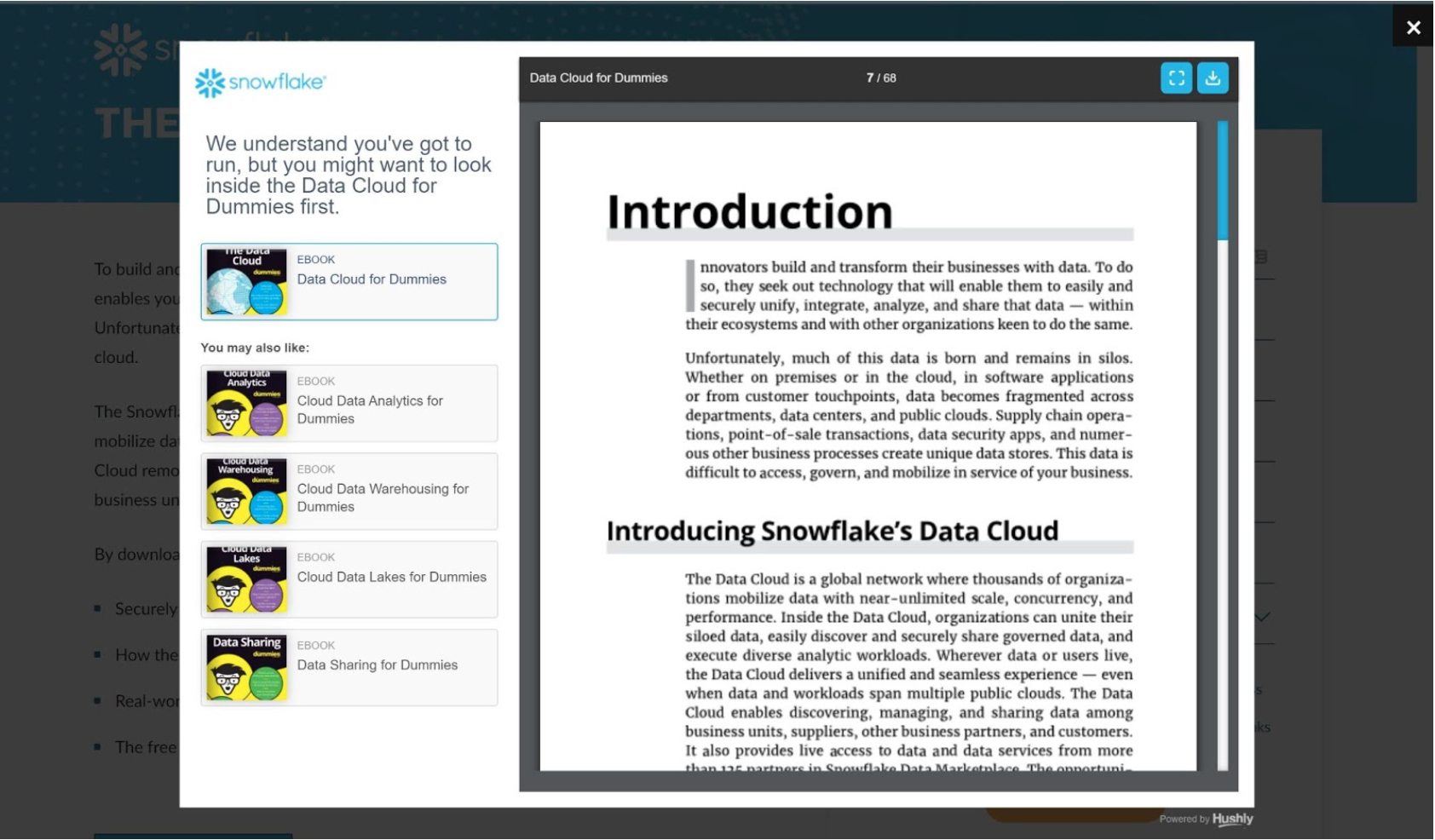
In this case, when you try to leave that page, an exit popup whets your appetite by giving you a preview of what will be inside of the guide.
But Snowflake doesn’t end its paid lead generation efforts with the “Dummies” book series.
Webinars and Conferences
B2B audiences love webinars and conferences, so why ignore them?
What makes them valuable is their content and the way the knowledge is shared with your audience. You can share educational content and insights from case studies and have industry experts share their expertise with your audience.
Snowflake crafted webinars and conferences around insightful topics relevant to its customers.
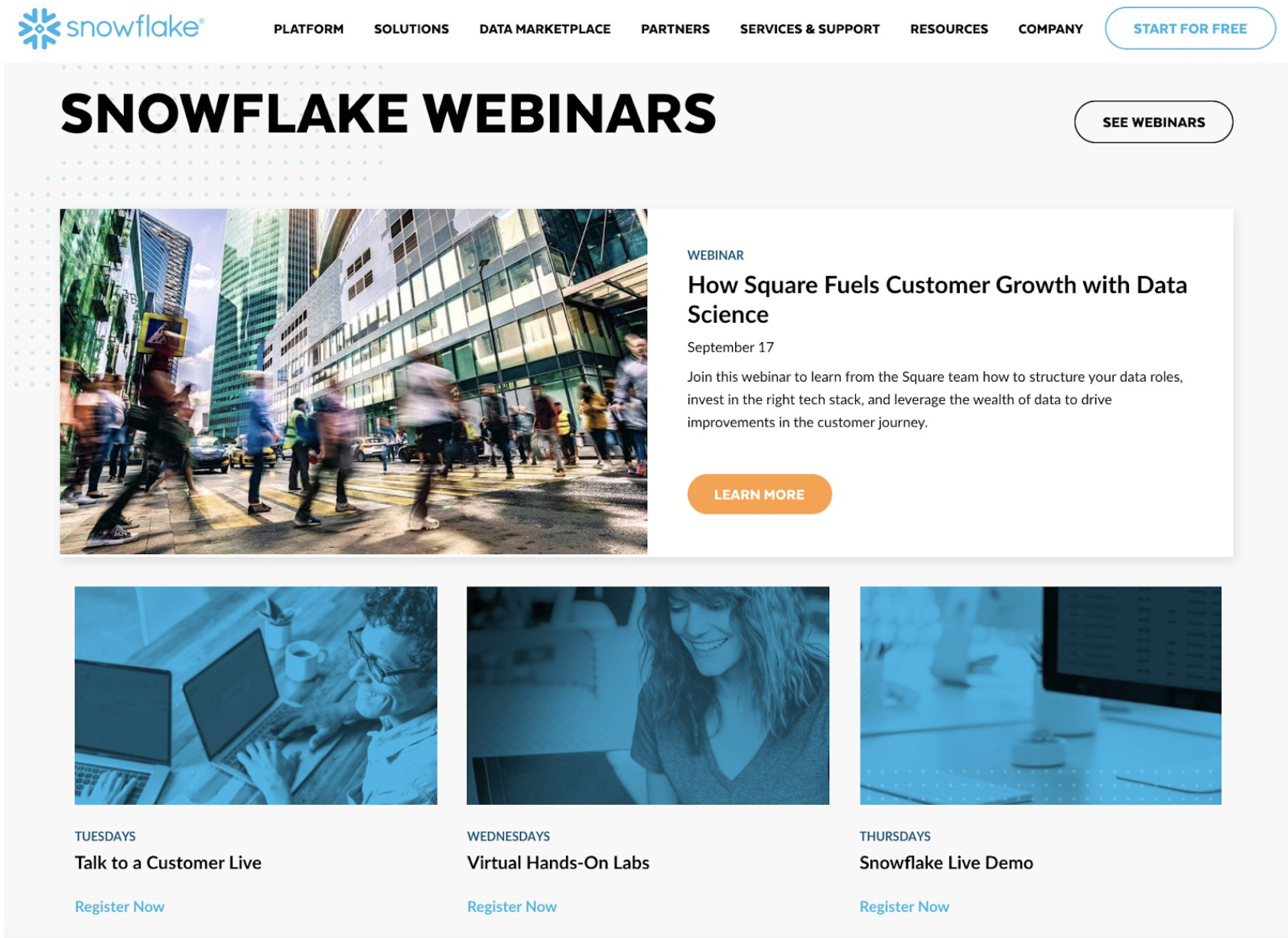
One great advantage of this value delivery technique is that you can connect better with prospects who prefer to learn visually rather than by reading a paper or guide. You don’t want to lose prospects or customers to the competition, so you need to repurpose your content to engage your audience better at every stage of their buying journey.
Distribute Your Content
Content won’t do much good if you don’t distribute it. Invest in creating a distribution engine that will take your content and place it in front of your audience.
Snowflake understands that distribution is just as critical as content creation, so they run ads for their webinars, ebooks, blog posts, and latest news releases.
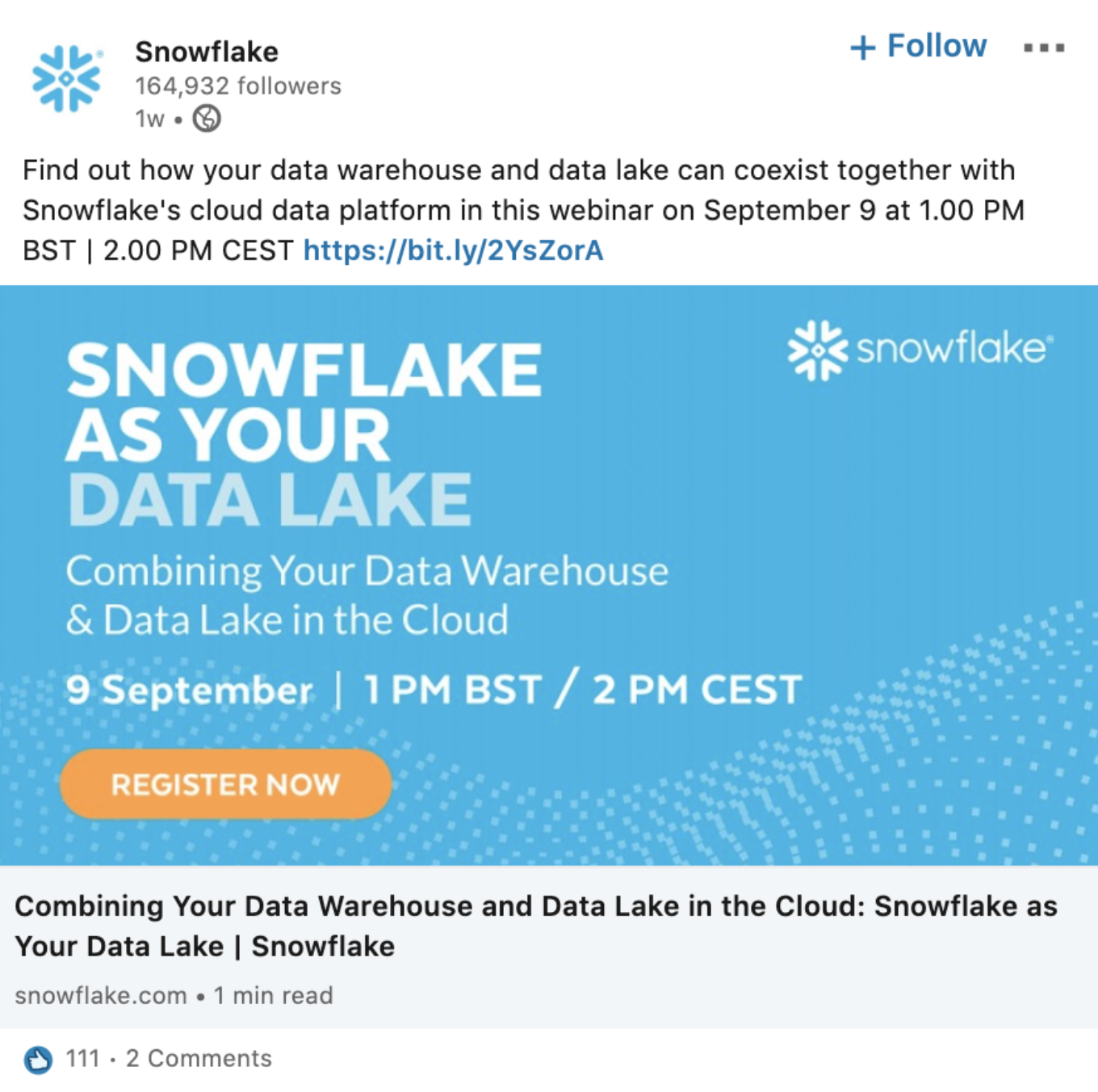
And they empower their team to distribute this content organically, too. On LinkedIn, Snowflake’s team and partners often share company content with their audiences and connections.
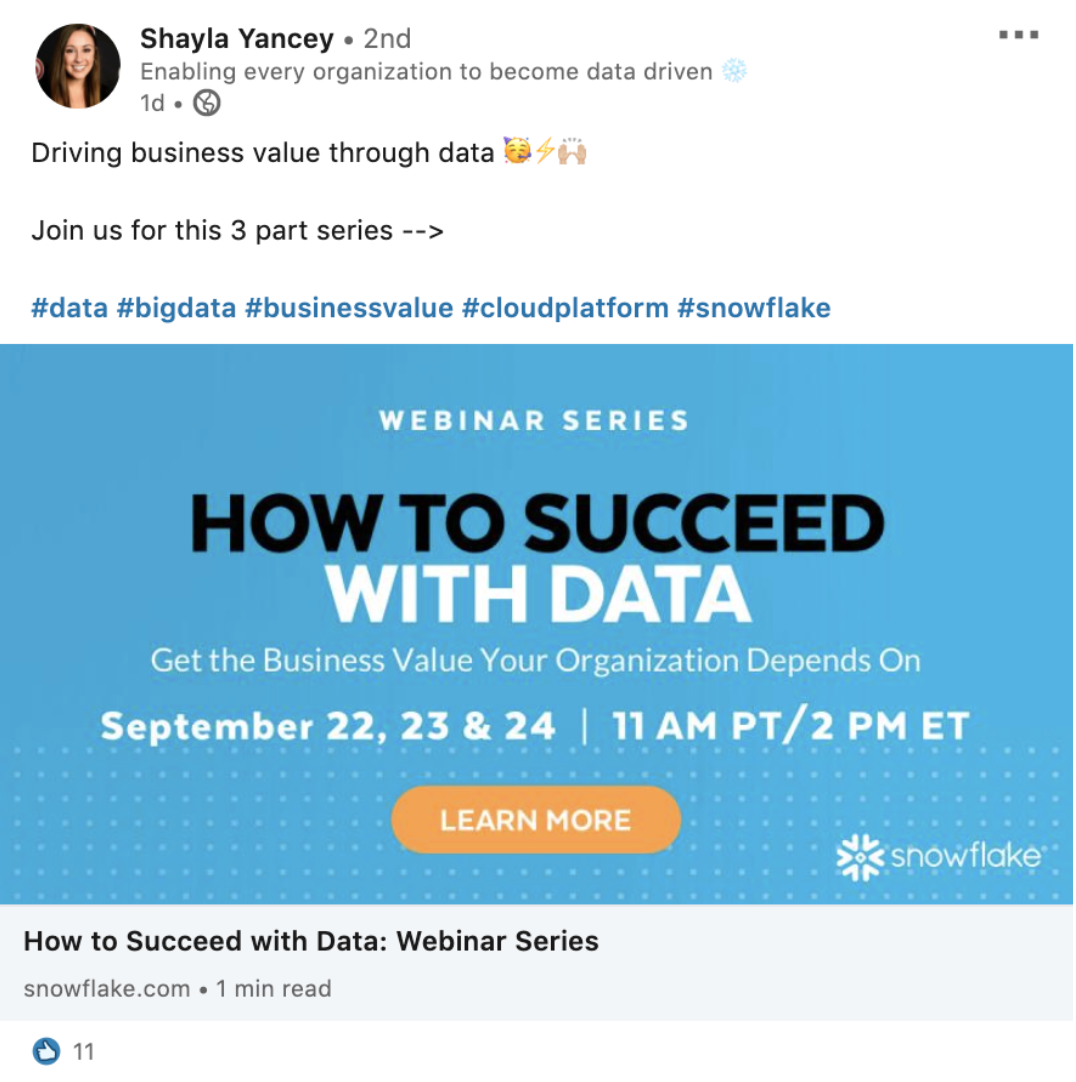
When you get your team involved in the content distribution process, you create a more engaged, productive team committed to driving real growth for your company.
All of this activity prioritizes the acquisition of leads. Someone reading a Data Cloud For Dummies book or attending a webinar on a similar topic is likely to be interested in Snowflake’s solutions.
It’s a simple strategy: Educate. Distribute. Engage. Sell. But it doesn’t end with lead acquisition.
Support Your Customers and Keep Them Connected
Snowflake keeps customers engaged by providing high-quality support and contributing to outside forums and other relevant platforms when users have questions:
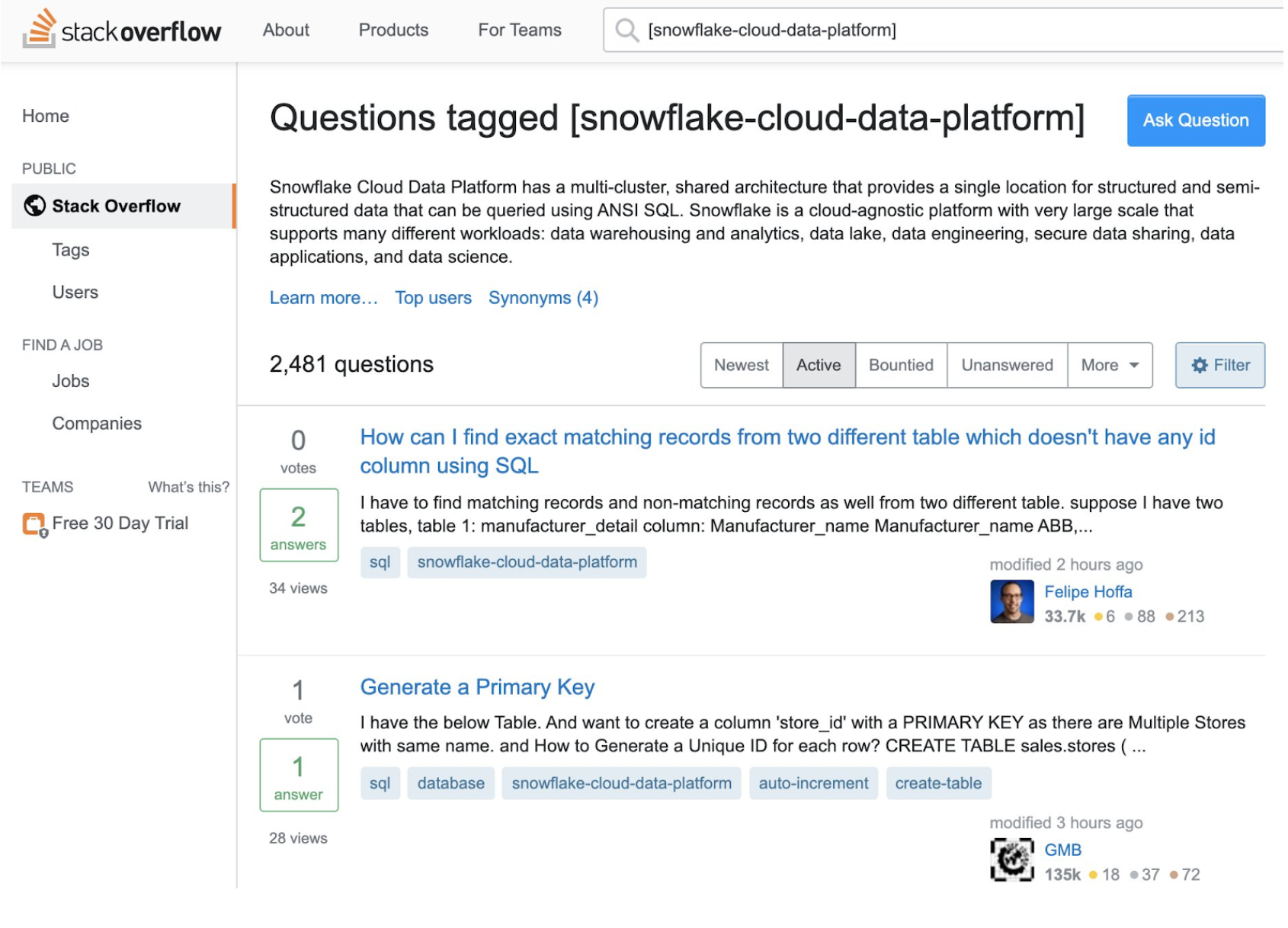
They take customer support a step further by arming brand ambassadors and community members with badges when they gain knowledge around the product.
People love certificates.
They share them on LinkedIn and include them in their resume.
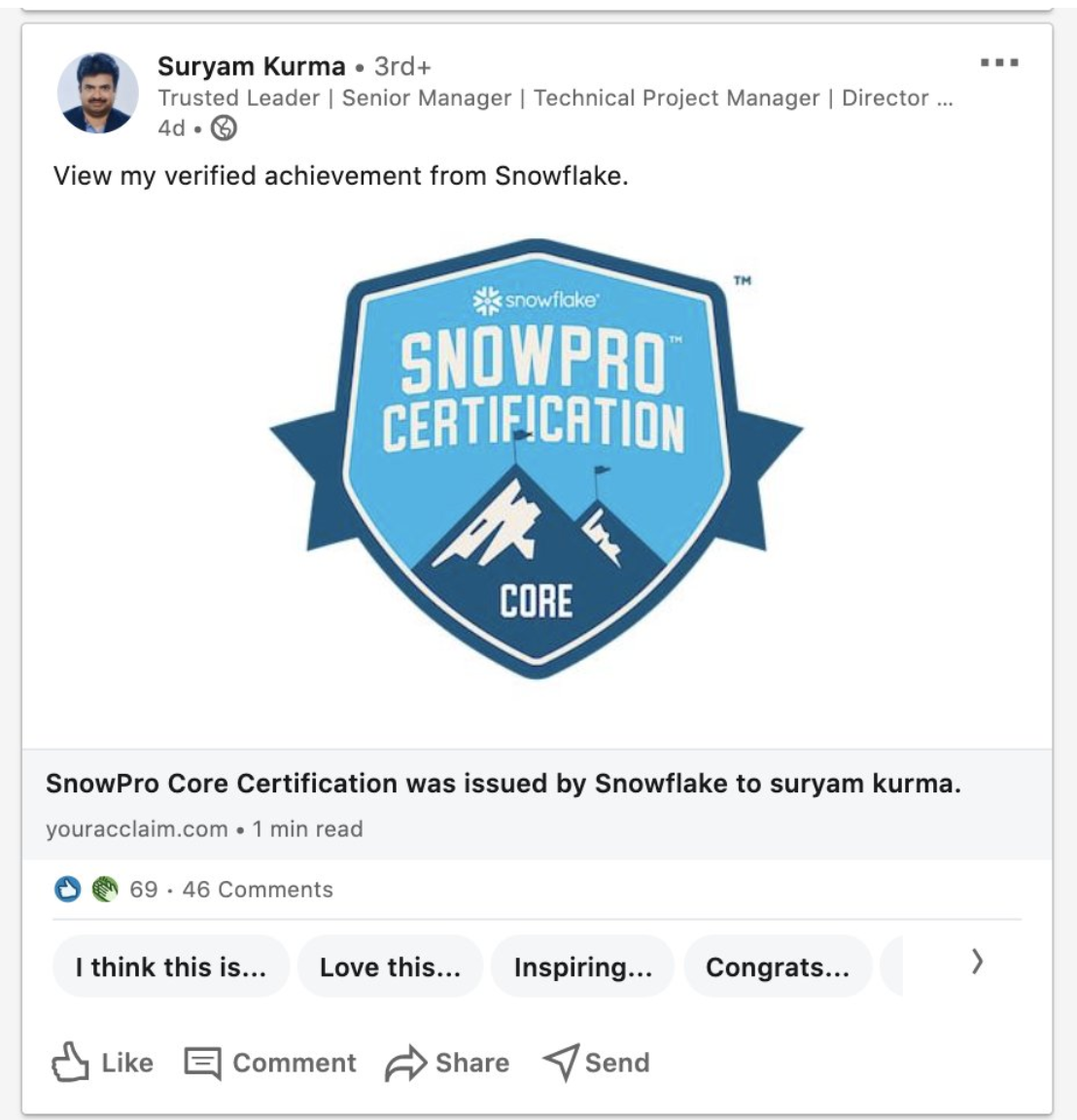
This strategy is a simple yet effective way to drive word of mouth and establish credibility for your brand. This certificate program results in three things:
- The recipient feels a sense of accomplishment and associates authority with the Snowflake brand.
- The connections of the recipient view Snowflake as a leader in offering educational and training material.
- The recipient now has skin in the game to speak highly of Snowflake as a brand and help elevate their reputation.
While this isn’t the KEY reason Snowflake has become a significant success, it’s undoubtedly one of the most underrated parts of their strategy, resulting in thousands of impressions and interactions on LinkedIn. Offering a simple digital certificate and training program has helped them quickly build a reputation based on trust and credibility.
It also helped them trigger a blizzard during that oversubscribed IPO.
Wrapping It All Up
The exciting thing about SaaS marketing is seeing how sophisticated the growth engines behind these brands are becoming.
Snowflake is doing a lot of “little” things right. Though tiny on their own, all of these actions contribute to a bigger digital engine and ecosystem that supports Snowflake’s broader success.
But the content engine that contributed to Snowflake’s success isn’t the same as those used by Masterclass or Canva, who built an excellent backlink empire.







